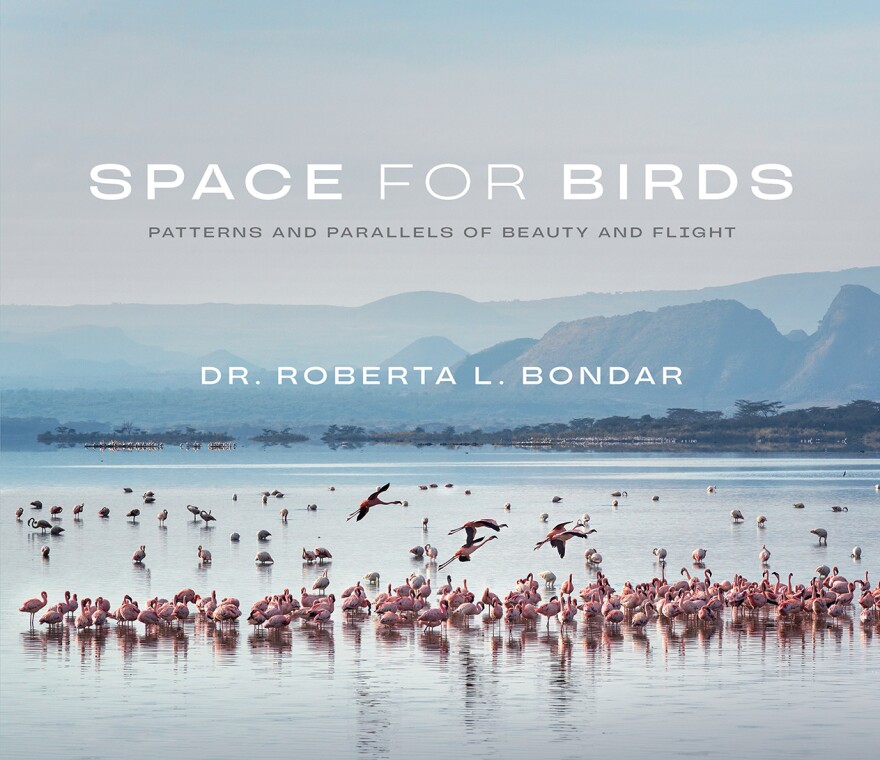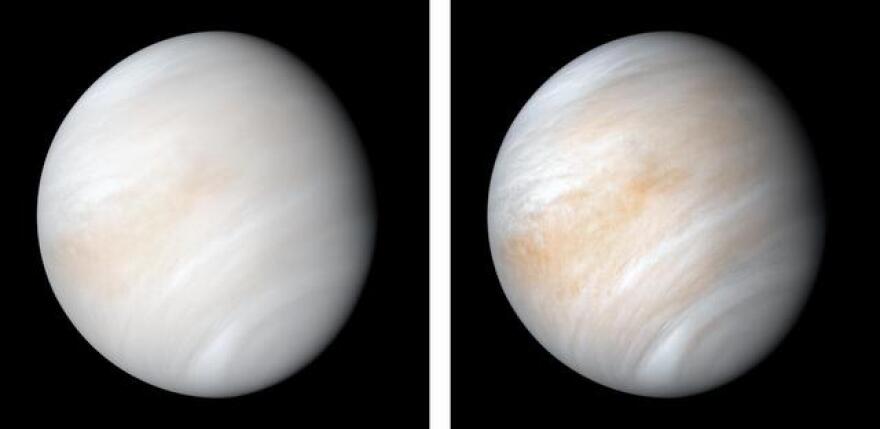Could there be life within Venus’s cloudy atmosphere?
Venus is the hottest planet in our solar system, with surface temperatures reaching up to 870°F. That makes the idea of life existing on this hellish planet seem impossible.
However, a new proposal suggests there may be a chance of discovering microscopic organisms hidden within the cloudy atmosphere of Venus.
At the Royal Astronomy Society’s National Astronomy meeting at Durham University in England, a proposal was made to send a probe into the clouds of Venus to look for gases linked to life here on Earth.
Jane Greaves, professor at Cardiff University in Wales, explained that there are some gases that are made by biological life on Earth that could be found on Venus. Scientists have been trying to search for these microorganisms with radio telescopes on Earth, but it is difficult.
“So, an opportunity came up to put in, it's just a proposal at this stage, to send a small spacecraft that could do this to orbit Venus,” Greaves said. “It could maybe hang around in that orbit for a couple of years and look for these gases really intensively, rather than us, like begging another telescope on Earth if we can have another night.”
If this probe is launched, it will be above the clouds of Venus, looking downward into the atmosphere. When looking at the top of the clouds, the probe will be able to detect molecules on the surface if they pop up.
Greaves convinced that if there is life, it would have to be small -- or it wouldn’t be able to float.
“We're thinking like microbes could float. And this does actually happen in the skies of the earth. So here the upper atmosphere is pretty cold, so we think maybe those microbes are just kind of tolerating it, and they're like blown around by the winds, and that maybe they return to the surface to do their reproduction and their life cycle and stuff,” said Greaves.
Science missions focusing on Venus are rare, but a lot of new proposals are popping up.
“You know, we're a space going nation. We have scientists to contribute. So, I find this really inspirational, actually, that people can share ideas and send a whole team of different spacecraft there,” said Greaves.
Birds and spacecraft have a lot in common
After launching into space, one veteran Canadian astronaut is bringing her knowledge back to Earth to study another form of flight.
Roberta Bondar’s career path led her into orbit on the Space Shuttle Discovery back in 1992, becoming the first female Canadian astronaut and first neuroscientist in space. The journey – and the view from her spacecraft -- deepened her appreciation of nature on our planet. Now, her hope is to use bird’s migratory patterns to help scientists develop better aerial travel and respect for Earth’s bird species.
In her new book, Space for Birds: Patterns and Parallels of Beauty and Flight, Bondar captured images from two different bird species--some shots taken while she was in the air herself. But before her experience as an astronaut, her love for birds began at a very young age.
“When we used to go camping in Wisconsin, Michigan from Sioux, Canada, my parents were very good about looking at the natural world and getting us interested in naming butterflies and birds,” Bondar said. “In biology, I excelled and decided that if there was a time when I could do something to help birds in any way, that I would like to do it.”

Space helped her develop a deeper appreciation and understanding of our fragile planet. Bondar said she went into space with the plan to gaze beyond just the planet and to look out into the vastness of space.
“It was this light-sucking black is all I can call it,” Bondar said. “It set a whole new tone for me to see the edge of our planet against this infinite black universe beyond. I think it was that kind of edge moment that to see the Earth as a planet, to be in that moment.”
After her space mission, Bander never lost her love for flying and used her experience to start observing birds. The two species Bondar followed and photographed for the book were the Whooping Crane and the Lesser Flamingo.
While in space, Bondar could see their massive migration corridors. On Earth, she was able to photograph them in flight.
“I wanted to be able to show that they are very strong,” Bondar said. “That they had a home to go to, that they relied on actual worlds of Earth to be able to maintain this long migration that they make.”
Aside from how humans can benefit and learn from birds, Bondar said she is hopeful that the message readers take away from her book is to appreciate our planet.
“If we ignore the natural world, we do it at our own peril,” Bondar said. “We need the natural world to do so many things. “There’s a view of looking at it as a service industry. I'd like to look at it a bit more emotionally, because there are living organisms that are fragile. Set aside plants and trees, which you just don't want to get rid of either, but when we look at things like birds, they actually can pull us across the planet.”





